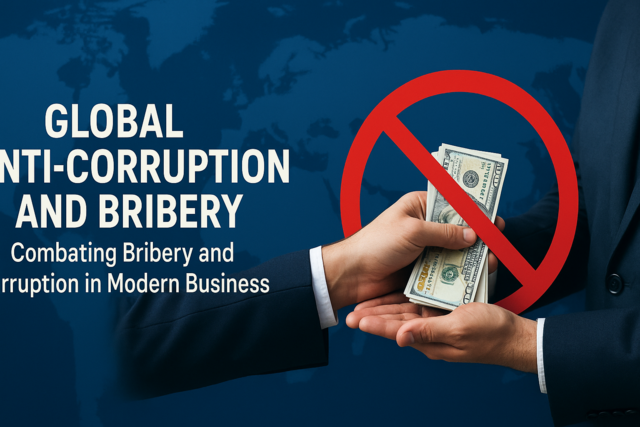The area of project management continues to provide management consultants with the ability to greatly impact an organization and its success.
We will cover in this section some of the basics of project management and how the management consultant can help an organization. So, let's get started on learning about this important topic.
PROJECT MANAGEMENT BASICS
How can effective and efficient project management help an organization? Help can come as an organization completes projects that are:
-
On time
-
Within budget
-
Within specification, meeting expectations
The consultant can help by providing information and training on project management techniques and processes.
Here are some of the areas the consultant can provide information.
1. What is a project charter
2. Why is a project sponsor important
3. What is management by objective
4. Why a project plan is important
5. How inclusion can be critical
6. How you can follow the initiate-plan-executive-monitor/control-close process
WHAT WE MEAN BY A PROJECT
When we refer to a project in the context of project management we mean any activity or endeavor that is important to the work of an organization.
This can include but not be limited to:
-
Release of software
-
Release of hardware
-
Adoption of a new process such as a new online time reporting system
-
Creation of a new feature such as a mobile application
ABOUT PROJECT SPONSORS
No matter what your setting – be it in industry, a non-profit, a start-up, or academia – success of a project depends on a project sponsor. A sponsor acts as:
-
Champion of the project
-
Visionary
-
Remover of roadblocks such as providing the time and money needed to complete a project
WHY A CHARTER IS IMPORTANT
Once you have a sponsor, the next step in project management is to get approval for the project. This can be official approval that will provide the resources – such as money and human resources – to make the project happen.
In developing the project charter, here are some guidelines.
-
List the project stakeholder
-
Know who will be impacted
-
Develop a steering committee
-
Keep leaders involved
-
Know who will do the work
The consultant can steer an organization in helping with this steps.
1. Get a sponsor
2. Get a charter
3. Name a project manager
4. Get the work done
The project manager does not typically do the work. The project manager makes sure the work gets done and done right.
More details about the project charter include:
1. Name the member of the team doing the work.
2. Make sure leaders and supervisors make expectations clear to project members.
3. Ask the team to define tasks as they know best how to get work done.
4. Develop and stick to a budget.
5. Develop and stick to a time line.
Make clear to management that an important part of the charter is the scope statement. You want to prevent scope creep. Scope creep can keep a project from being completed on time. Remember that the charter is an agreement between the team and leadership.
MANAGE BY OBJECTIVES
Consultants can help organizations keep outcomes successful if leadership manages by objective. Here are some guidelines on how to manage by objectives.
1. Establish clear and realistic objectives to develop your scope statement.
2. Evaluate that your group is meeting objectives.
3. Schedule meetings regularly to check on progress in meeting objectives.
Have leadership work closely with a project plan here are some guidelines on how to do this.
1. Have a project manager set up the project plan.
2. Include a calendar in the plan.
3. Make the implementation team aware of the plan
4. Revise the plan at least weekly.
5. Do not let major milestones move so deadlines do not slip.
6. Keep inclusion in mind so that all impacted parties are included. A project is not successful if end users of the product do not use a product that does not suit their needs.
The SMART acronym can apply here. It stands for Specific, Measureable, Achievable, Realistic, and Timely. The consultant can advise to have clients follow the SMART idea to help with success in project management.
GET THINGS OFF TO A GOOD START
When you first begin a project here are some guidelines on getting off to a good start.
1. Pick the right project manager
2. Set up a realistic timeline
3. Stick to the objectives
4. Document objectives clearly in a charter
5. Set up a scope statement
Once you get this foundation, proceed with planning using these guidelines.
1. Pick team members
2. Create a timeline – a work breakdown structure is a good way to go
3. Create activity lists
4. Look a metrics
5. Estimate costs
6. Write down a schedule
7. Write down roles and responsibilities
8. Look at risk
9. Get format approval of the project to complete the planning phase
LET'S REVIEW
How can effective and efficient project management project management help an organization? The help can come as an organization completes projects that are:
-
On time
-
Within budget
-
Within specification, meeting expectations
The consultant can help by providing information and training on project management techniques and processes.
Here are some of the areas the consultant can provide information.
-
What is a project charter
-
Why is a project sponsor important
-
What is management by objective
-
Why a project plan is important
-
How inclusion can be critical
-
How you can follow the initiate-plan-executive-monitor/control-close process
Once you have a sponsor, the next step in project management is to get approval for the project. This can be official approval that will provide the resources – such as money and human resources – to make the project happen.
A charter we define as an agreement between the sponsor and the team. It can include any details that will help the team achieve its objectives. This can include a goals statement, timeline, budget allotment, and user expectations.
In developing the project charter, here are some guidelines.
-
List the project stakeholders
-
Know who will be impacted
-
Develop a steering committee
-
Keep leaders involved
-
Know who will do the work
The consultant can steer an organization in helping with this steps.
-
Get a sponsor
-
Get a charter
-
Name a project manager
-
Get the work done
The project manager does not typically do the work. The project manager makes sure the work gets done and done right.
More details about the project charter include these guidelines.
-
Name the members of the team doing the work.
-
Make sure leaders and supervisors make expectations clear to project members.
-
Ask the team to define tasks as they know best how to get work done.
-
Indicate that you will develop and stick to the budget.
-
Indicate that you will develop and stick to a time line.
Remember to explain the basics to management. Here is a summary.
1. Project management involves the work of a team to achieve specific goals.
2. Project management involves initiation, planning, execution, controlling, and closing for the work of the team.
3. A project we define as an effort that products a service, product, or result with a beginning and end.
4. A project has time constraints.
5. A project has budget constraints.
6. A project brings about a value to the organization.
7. Non-project work includes work that is business as usual and is repeated periodically.
8. Management of projects and management of non-projects can involve different skills and strategies.
INSTRUCT ON PROJECT MANAGERS AND THE PROFESSION
Consultants can explain that project managers can be designated for a specific project. Project managers can also have project management as a full time job and function. Some organizations may have not project managers as a job title and should consider hiring such a function. A project manager can receive a certification from the Project Management Institute and also have a degree in project management. Instructing on this profession and having an organization consider hiring project managers can help that organization achieve goals.
With such a full time position, the project manager does not have another job. Instead, the project manager is responsible for planning, executing, and closing projects. This can involve many fields. Here are some of them
-
Hardware
-
Software
-
Construction
-
Architecture
-
Engineering (including design engineering, production engineering, and process engineering)
-
Computing
-
Information management
-
Education
-
Healthcare
GETTING BACK TO THE SCOPE STATEMENT
The scope statement appears as one of the of the most important parts of the charter. Here are some guidelines on developing an effective scope statement.
1. Include what is in scope
2. Explain what is out of scope so that scope creep does not set back the project
3. Set realistic expectations
Keep in mind that a successful project is one that is on time and within budget and within the specification.
PROJECT MANAGEMENT SOFTWARE
A consultant can help an organization learn about project management software. Here are some of the options.
-
Software can be web based at larger companies
-
Software can appear on the desktop of users in larger companies
For a smaller company a single user system can work. This mean only one person can edit the project plan at once. This could work in a factory application where only a few people are involved in project planning that includes inventory control.
For a very simple interface a personal project management application can work. This is in contrast to a collaborative system where many users can modify project plans or part of plans.
Project management software can be a huge productivity tools for an organization. It can also involve an expensive purchase. With a large commitment to a project management program, the program can provide tools to view project data. These tools can show in a visual and graphic way data that is fluctuating and includes:
-
how much is being spent on a project
-
how many hours are spent on a project
-
how closely goals are being met
-
critical path problems
With critical path problems if a section of a project is not on time, the entire project deadline could suffer. Software packages can help managers see this.
HOW TO GUIDE ON PROJECT MANAGEMENT
Here are the steps you can use as a how to guide to teach or coach on project management.
Review with leadership that the basic steps in project management are the following.
I. Initiate
II. Plan
III. Execute
IV. Monitor and control
V. Close
When you initiate you select a project manager and determine objectives. You also document by creating a charter and developing a scope statement. You also begin to divide work into phases.
When you plan you refine the scope statement and put together the team. You also create activity lists and a work breakdown structure. Estimating resources, time, and cost happens now. You also define metrics, identify risk, and get a formal approval to proceed.
When you execute you finalize the team and execute the plan. When you monitor and control you perform important functions as shown following.
When you monitor and control here is a possible checklist of activities.
- Measure according to project plans
- Determine variance
- Determine the need for corrective action
- Verify scope
- Check for scope creep
- Integrate change control
- Perform risk assessments
- Use issue logs
- Facilitate conflict resolution
- Report on performance
- Create forecasts
- Administer contracts
When you close, here is a typical checklist of activities.
- Develop procedures for closure
- Complete closures for contracts
- Confirm work was completed
- Gain formal acceptance of product or service
- Provide a "post-mortem"
- Complete a final performance report
- Index records
- Archive records
- Update any knowledge base that applies
- Hand off completed products and services
- Release resources as needed
HOW TO ON GOOD COMMUNICATION FOR PROJECT MANAGERS
Consultants can stress the importance of good communication when it comes to effective project management. Here are some how to guidelines.
-
Keep conversations formal and informal.
-
Know that structured communication has its place
-
Know that unstructured and informal communication can help.
-
Consider how informal communication with a team member can help build good team relationship and prevent misunderstandings.
-
Know that informal communication can possibly foretell a potential problem.
-
Overuse of informal communication can lead to problems.
-
Consider using instant messaging and social media as they can help build team cohesion.






























